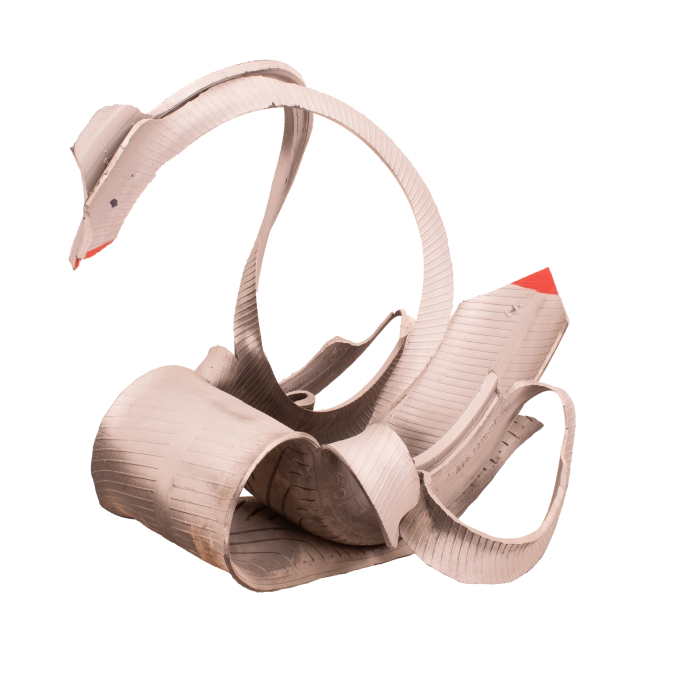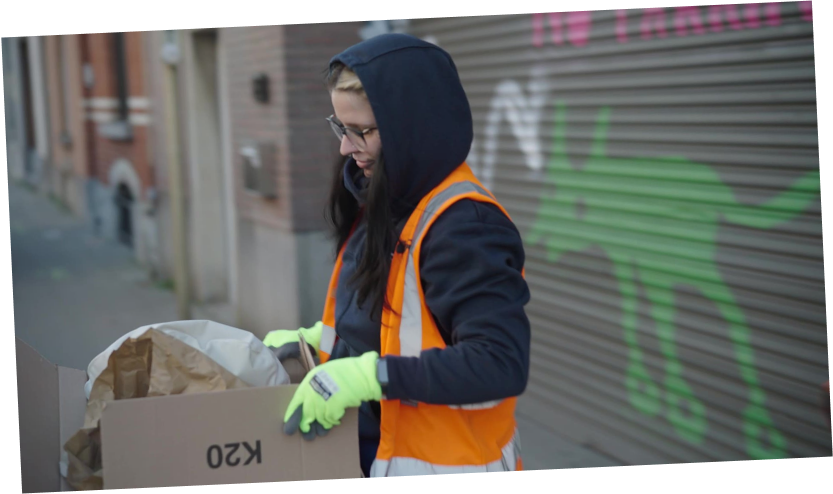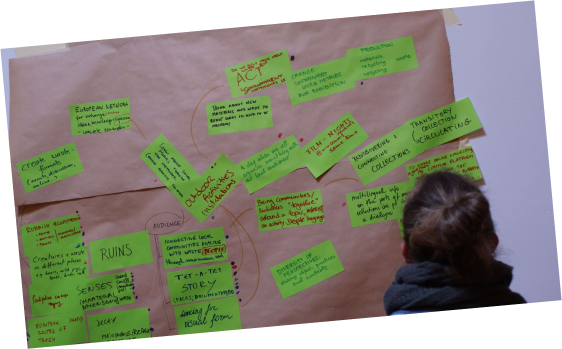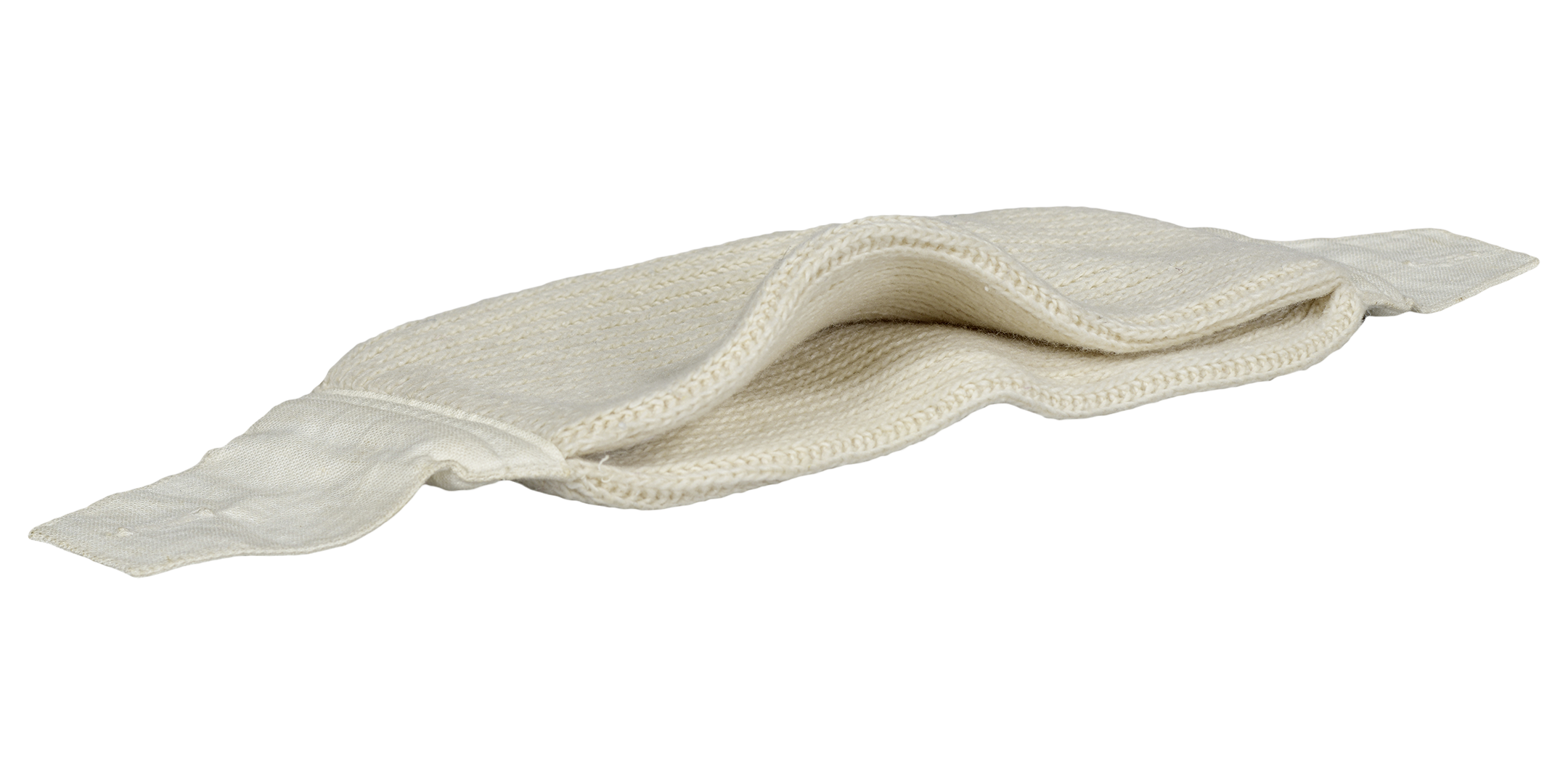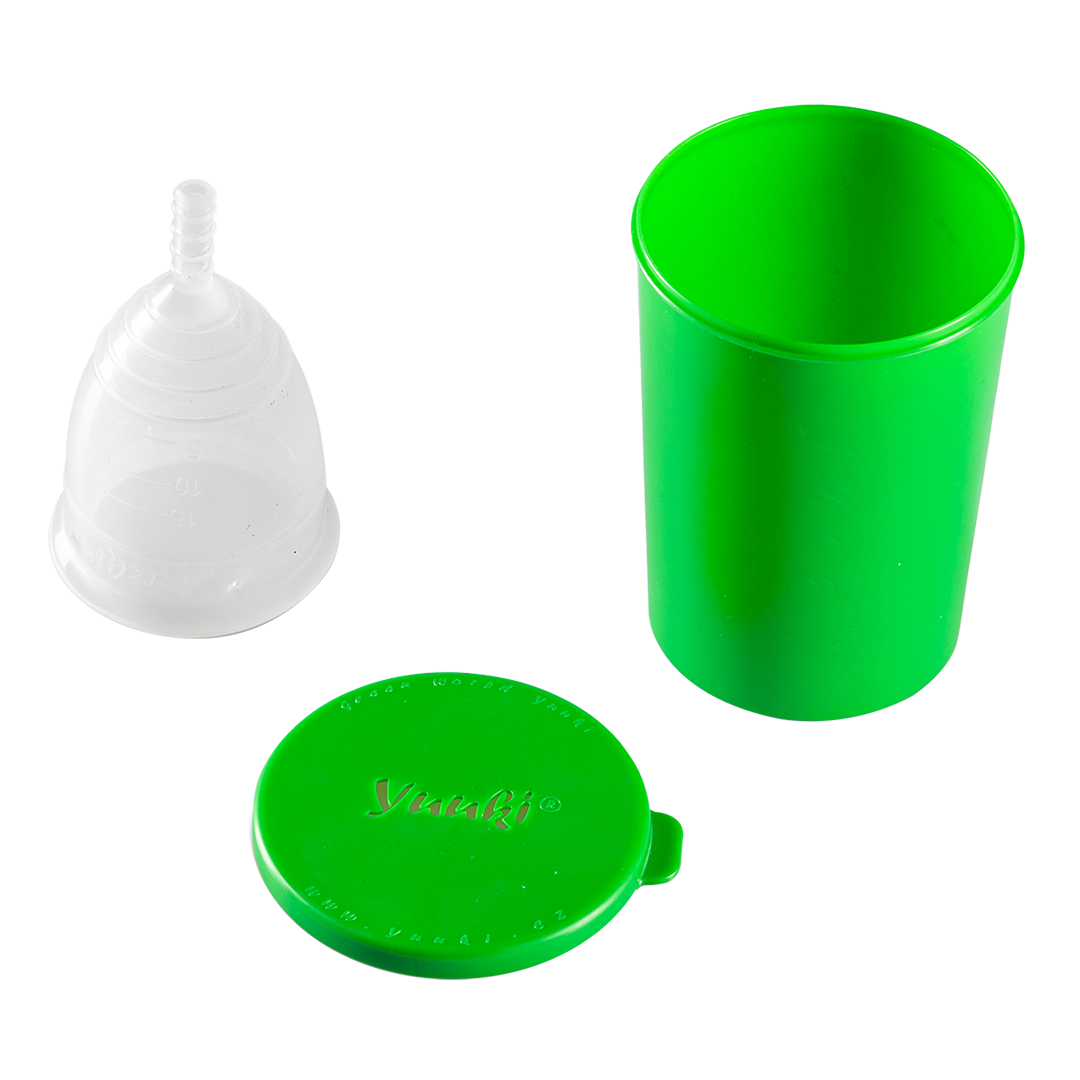Artist/Maker Unknown
Date Production/Creation
1930s
Entry in the museum collection
1991
Place of origin
Leipzig, Germany, Europe
Current location
Museum of European Cultures, Berlin, Germany
Material
Cotton, linen, machine-knitted, machine-sewn
Dimension
34 cm x 10 cm x 0.5 cm
Inventory Number I (23 G) 542/1991
Keyword Menstruation Washable Zero waste
Copyright
Status In storage
Image Credit Staatliche Museen zu Berlin, Museum of European Cultures / Christian Krug Public Domain Mark 1.0
The bleeding edge of menstrual hygiene technology.
What is this object about, who are the people behind it?
Washable fabric pads such as this one became popular in Germany in the early 20th century. They were worn by attaching them to a sanitary belt. In the 1930s, German catalogues recommended machine-knitted pads "to all women for health reasons". Even into the 1950s, they were still offering the pads for 60 pfennig a piece.
What places is this object related to, how European/transnational is it?
Similar knitted pads were used in other European countries.
Why and how did this object arrive in the museum’s collection?
The pads were acquired in 1991 from a woman from Leipzig.
What is the relation of this object to waste?
Knitted pads were sold in Germany from the end of the 19th century. Since they could be washed and boiled, they could be used again and again, meaning there was no waste, as there was with the disposable pads that came on the scene in the 1920s.

